Diagnosis of vibrations in a ventilation fan
The LEM played a part in dealing with a problem connected with excessive vibrations in the blades of a ventilation fan…
DESCRIPTION
Given the nature of its service portfolio, the Test and Measurement Laboratory (LEM) is often asked to examine specific vibration problems.
For the purpose, LEM can marshal its test resources and exploit its vast experience in vibratory issues to help it pinpoint the particular defects and find solutions to the problems encountered.
By way of example, LEM played a part in dealing with a problem connected with excessive vibrations in the blades of a ventilation fan reported by maintenance personnel, which seemed to point to premature wear in the bearings.
LEM offered a service comprising a full, customised analysis of the problem to identify and understand the vibratory phenomena involved and find a solution to its client’s multi-faceted problem.
The issue was of vital importance since the ventilator fan plays a major safety function (smoke extraction in a tunnel) and needs to be permanently operational. A quick and lasting solution had therefore to be found to the problem.
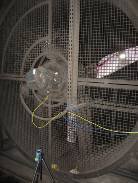
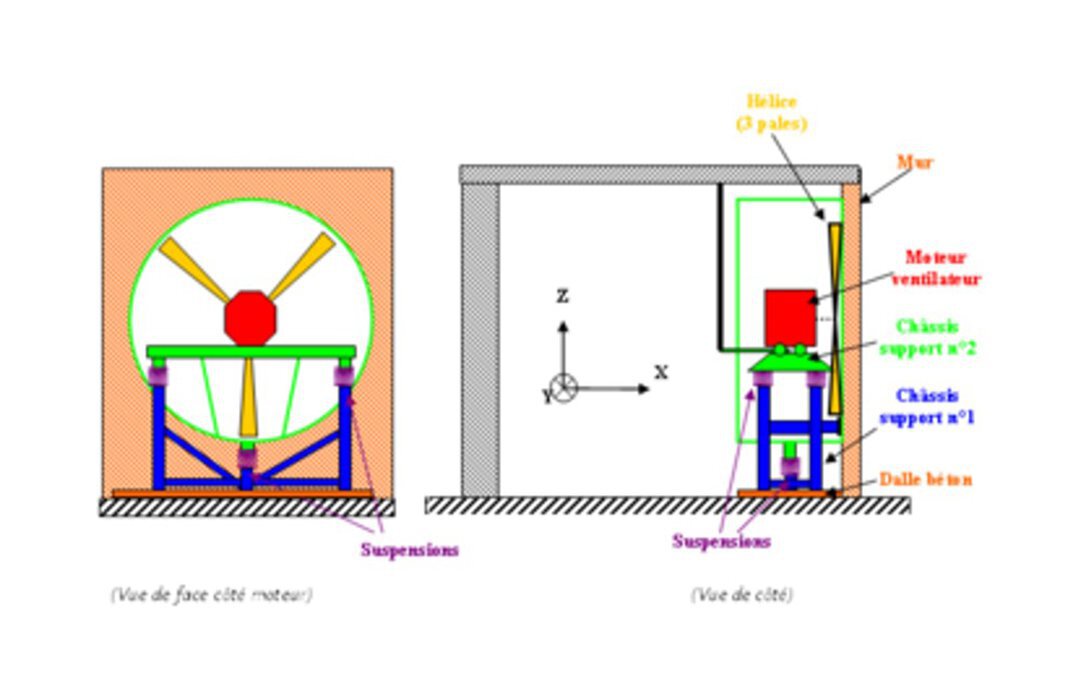
Analysis of the context (background, issues at stake, etc….)
Analysis of the problem
Analysis on the particular structure and its environment
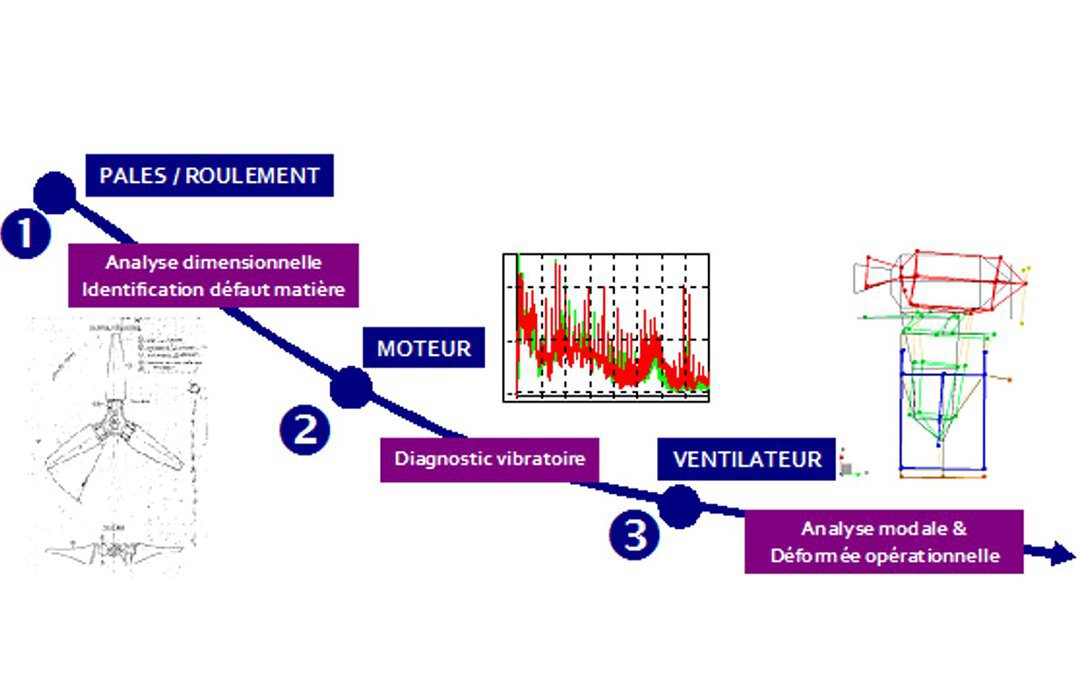
► Choice of test methodology to meet the client’s needs. The approach adopted by LEM was based on action at different levels in three different stages:
Stationary measurements
Non destructive penetrant testing of the 3 blades of the propeller fan to identify any possible cracks that could explain the high levels of vibration reported;
Characterisation of the ventilator suspensions (damping, operating frequency range);
Characterisation of the stiffness factor at fan anchor point fixings to ensure that the conditions required to enable the suspension elements to work properly are fulfilled;
Experimental Modal Analysis (EMA) of the whole ventilator + support frame structure to establish natural frequencies and mode shape deflections.
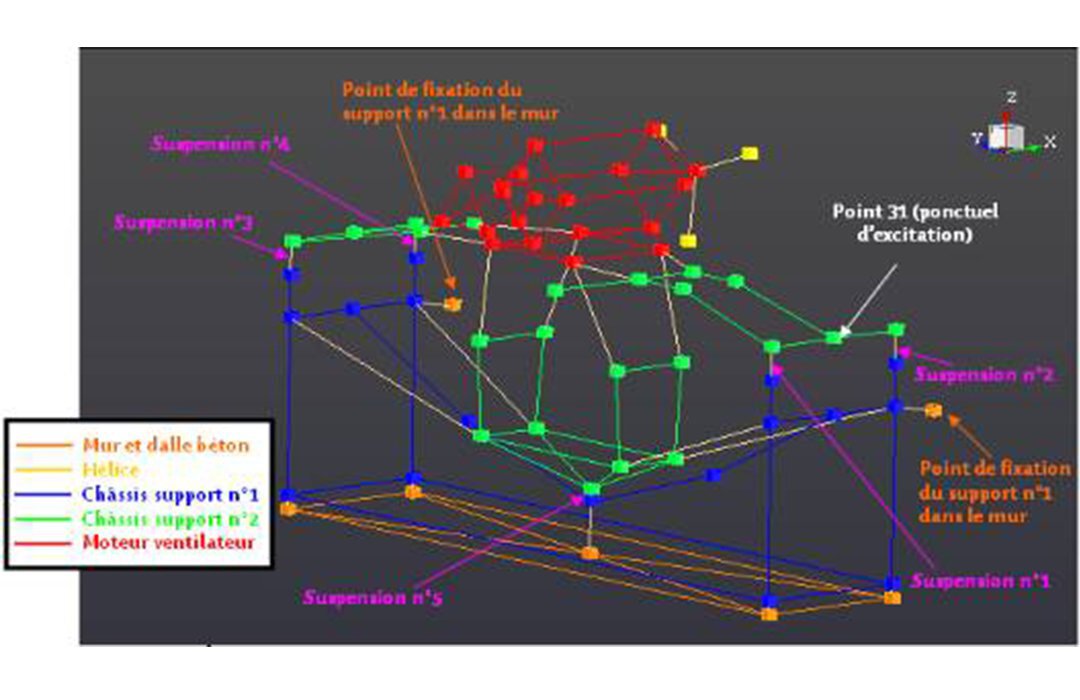
Measurements in operation
Diagnosis of the status of the motor bearings to check their condition and obtain a detailed understanding of the vibration behaviour of the component parts (inner or outer rings, races):
- Temporal analysis in accordance with NF ISO 10816-3:2009 and statistical temporal analysis of acceleration (crest factor, kurtosis);
- Spectral analysis (calculation of autospectra, envelope analysis) to detect the presence or absence of frequency factors characteristic of bearing defects and identify instances of out-of-round.
Analysis of operational deflection shapes (operational deflection) of the ventilation fan + support unit to establish correlation with the results obtained via EMA.
Establishing correlations between results is one way of checking whether or not natural frequencies are excited by ventilator fan operation.
N.B: Excitation of the natural frequencies of a structure that is in operation increases vibration levels and may ultimately cause severe vibration fatigue and even structural damage.
By analysing operational deflection shapes, it is also possible to study the movements of the different parts in relation to each other and thereby supplement the analysis conducted on the stationary unit with regard to its suspension and the stiffness of its frame.
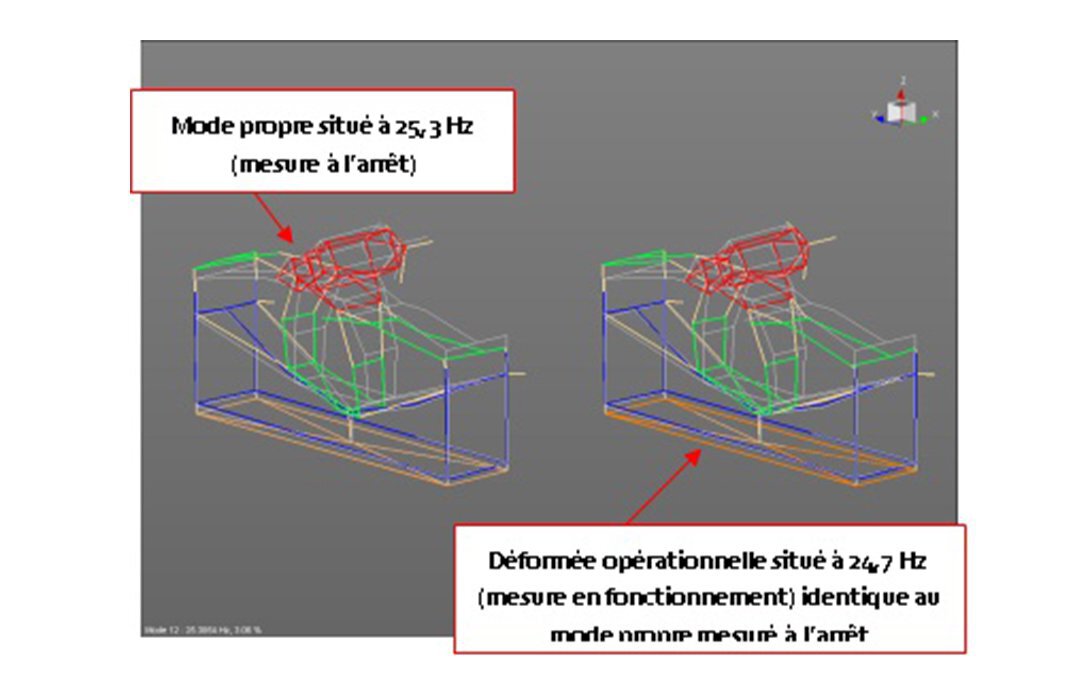
Measurement analysis
Static measurements revealed a number of factors that explain the high vibration levels measured at the bearings:
- Insufficient uncoupling provided by the suspensions;
- Inadequate stiffness of the support frame (to which the suspension systems are attached), also differing from one location to another;
- Natural frequencies of the suspension systems, which are too high in relation to the rotational speed of the fan.
The “correlative” analysis performed after the tests in operation suggests that the high vibration levels measured at the motor bearings may be indicative of the following:
- A defect in the roller cage of the rear bearing ;
- A defect in the inner ring of the front bearing ;
- A poorly designed and incorrectly sized fan support frame (both as regards suspension system and structure anchor point stiffness).
Recommendations
The LEM suggested a design review of the fan supporting structures in order to avoid the vibration levels created by excitation of the structure’s natural frequencies when the ventilator fan is in operation. It is important to note that the vibration levels created by the natural resonance of the complete structure when in operation may be one cause of premature wear and tear in the bearings




